
Corsican is a Romance language consisting of the continuum of the Italo-Dalmatian dialects spoken on the Mediterranean island of Corsica, France, and in the northern regions of the island of Sardinia, Italy, located due south.
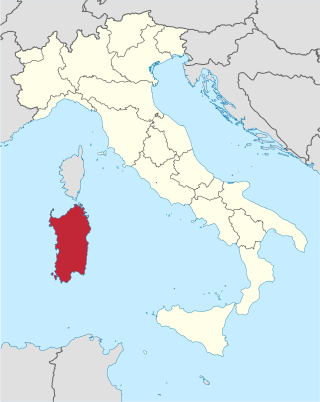
Sardinia is the second-largest island in the Mediterranean Sea, after Sicily, and one of the twenty regions of Italy. It is located west of the Italian Peninsula, north of Tunisia and 16.45 km south of the French island of Corsica.
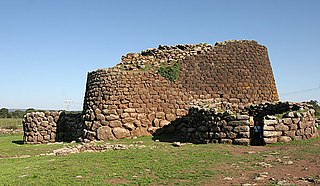
The nuraghe, or nurhag, is the main type of ancient megalithic edifice found in Sardinia, Italy, developed during the Nuragic Age between 1900 and 730 BC. Today it has come to be the symbol of Sardinia and its distinctive culture known as the Nuragic civilization. More than 7,000 nuraghes have been found, though archeologists believe that originally there were more than 10,000.

Archaeological evidence of prehistoric human settlement on the island of Sardinia is present in the form of nuraghes and other prehistoric monuments, which dot the land. The recorded history of Sardinia begins with its contacts with the various people who sought to dominate western Mediterranean trade in classical antiquity: Phoenicians, Punics and Romans. Initially under the political and economic alliance with the Phoenician cities, it was partly conquered by Carthage in the late 6th century BC and then entirely by Rome after the First Punic War. The island was included for centuries in the Roman province of Sardinia and Corsica, which would be incorporated into the diocese of Italia suburbicaria in 3rd and 7th centuries.

The Province of Sardinia and Corsica was an ancient Roman province including the islands of Sardinia and Corsica.
The Corsicans are a Romance ethnic group. They are native to Corsica, a Mediterranean island and a territorial collectivity of France.
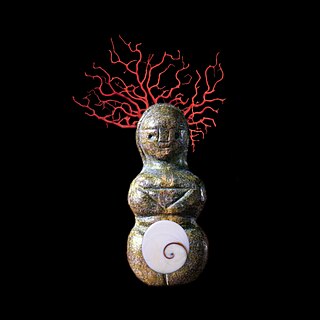
The Corsi were an ancient people of Sardinia and Corsica, to which they gave the name, as well as one of the three major groups among which the ancient Sardinians considered themselves divided. Noted by Ptolemy, they dwelt at the extreme north-east of Sardinia, in the region today known as Gallura, near the Tibulati and immediately north of the Coracenses.

The prehistory of Corsica is analogous to the prehistories of the other islands in the Mediterranean Sea, such as Sicily, Sardinia, Malta and Cyprus, which could only be accessed by boat and featured cultures that were to some degree insular; that is, modified from the traditional Paleolithic, Mesolithic, Neolithic and Chalcolithic of European prehistoric cultures. The islands of the Aegean Sea and Crete early developed Bronze Age civilizations and are accordingly usually treated under those categories. Stone Age Crete however shares some of the features of the prehistoric Mediterranean islands.

The Nuragic civilization, also known as the Nuragic culture, formed in the Mediterranean island of Sardinia, Italy in the Bronze Age. According to the traditional theory put forward by Giovanni Lilliu in 1966, it developed after multiple migrations from the West of people related to the Beaker culture who conquered and disrupted the local Copper Age cultures; other scholars instead hypothesize an autochthonous origin. It lasted from the 18th century BC, or from the 23rd century BC, up to the Roman colonization in 238 BC. Others date the culture as lasting at least until the 2nd century AD, and in some areas, namely the Barbagia, to the 6th century AD, or possibly even to the 11th century AD.

The Torrean civilization was a Bronze Age megalithic civilization that developed in Southern Corsica, mostly concentrated south of Ajaccio, during the second half of the second millennium BC.

The Sardinians, or Sards, are a Romance language-speaking ethnic group native to Sardinia, from which the western Mediterranean island and autonomous region of Italy derives its name.
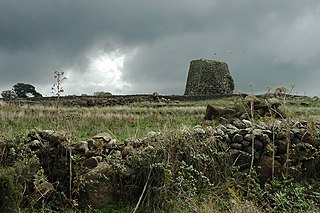
Paleo-Sardinian, also known as Proto-Sardinian or Nuragic, is an extinct language, or perhaps set of languages, spoken on the Mediterranean island of Sardinia by the ancient Sardinian population during the Nuragic era. Starting from the Roman conquest with the establishment of a specific province, a process of language shift took place, wherein Latin came slowly to be the only language spoken by the islanders. Paleo-Sardinian is thought to have left traces in the island's onomastics as well as toponyms, which appear to preserve grammatical suffixes, and a number of words in the modern Sardinian language.
The Balares were one of the three major groups among which the Nuragic Sardinians considered themselves divided.
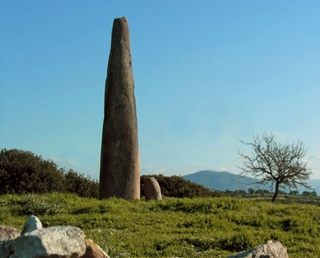
The Pre-Nuragic period refers to the prehistory of Sardinia from the Paleolithic until the middle Bronze Age, when the Nuragic civilization flourished on the island.
The Ilienses or Iolaes or Ilians or Iolai ; later known as Diagesbes (Διαγησβεῖς) or Diagebres (Διαγηβρεῖς) were an ancient Nuragic people who lived during the Bronze and Iron Ages in central-southern Sardinia, as well as one of the three major groups among which the ancient Sardinians considered themselves divided. After the Sicilian Wars began with the Punic invasion in the sixth century BC, part of them retreated to the mountainous interior of the island, from which they opposed the foreign rule for centuries.

Hampsicora was a Sardo-Punic political leader and landowner of Sardinia, and the leader of the major anti-Roman revolt in the province of 215 BC.
The Roman-Sardinian Wars were a series of conflicts in Sardinia between the 3rd century BC and the 1st century AD. These wars pitted the Roman Republic and later the Roman Empire against the major Sardinian tribes: the Ilienses, the Balares and the Corsi, in a struggle for control of the coastal cities.

Sardinian surnames are surnames with origins from the Sardinian language or a long, identifiable tradition on the Western Mediterranean island of Sardinia.
















